
Villa-Lobos: Sonatas para violino e piano
Emmanuele Baldini – violino
Pablo Rossi – piano
No texto do encarte do álbum, mais novo lançamento da série Música do Brasil do selo Naxos, a pesquisadora Camila Fresca localiza as Três sonatas para violino e piano na obra de Heitor Villa-Lobos. Foram escritas entre 1912 e 1920, anos essenciais, “momento em que ele domina as ferramentas da composição e delineia sua linguagem, ao mesmo tempo em que, com grande esforço, consegue suas primeiras vitórias profissionais”. Ela vai além, ao identificar nas peças a influência da linguagem francesa, marcante no início de carreira do compositor. E que fica clara, por exemplo, na nº 1, batizada por ele de Désespérance, e de forte tom melancólico; ou na Sonata fantasia nº 2, tocada na Semana de Arte Moderna. Mas o Villa-Lobos que se revela nas obras é um autor em movimento constante, e entre a nº 1 e a nº 2 o aumento no domínio da escrita é marcante, assim como a Sonata nº 3 já vai apontar para uma nova fase de sua trajetória, em que o diálogo com autores como Stravinsky será fundamental. E então se entende a importância da coleção Música do Brasil: oferecer leituras de referência do repertório, oferecendo a chance de contato mais íntimo com nossos principais compositores. E também com intérpretes que, como o violinista Emmanuele Baldini e o pianista Pablo Rossi, se inserem em definitivo na história da musica brasileira pelas leituras que oferecem.
Clique AQUI para comprar na Loja CLÁSSICOS
Clique AQUI para ouvir no Spotify
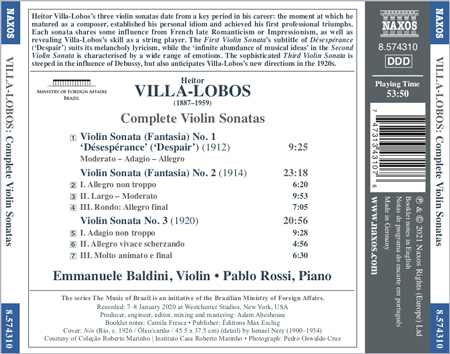
Texto do encarte do CD
Heitor Villa-Lobos (1887–1959)
Complete Violin Sonatas
Heitor Villa-Lobos wrote three violin sonatas, all of which date from the years 1912 to 1920. This was a key period in his career, the moment at which he matured as a composer, establishing his own personal idiom and, with a great deal of hard work, experienced his first professional triumphs.
The young Villa-Lobos welcomed in 1912 by conducting the Marine Band of Rio de Janeiro at a New Year’s party. During the next few months he began work on several major compositions, including the opera Izath and the Violin Sonata (Fantasia) No. 1 ‘Désespérance’ (‘Despair’). He then travelled to the north of Brazil, spending six months in the Amazon rainforest cities of Manaus and Belém. On returning to Rio he met his future wife, the pianist Lucília Guimarães, who played a crucial role in his career thereafter.
Far from being a recognised composer, at this stage Villa-Lobos was earning a living as a jobbing cellist, playing symphonic repertoire as an orchestral musician, entertaining customers in cafés and restaurants, and accompanying silent movies. His skill as a string player and the aesthetic influences that were guiding him at this time are reflected in his First Violin Sonata.
This is a single-movement work, made up of various interlinked sections which in effect create a concise sonata form, with an introduction (Moderato) and three further episodes (fast–slow–fast). Villa-Lobos does not follow this structure too strictly, however, as suggested by the use of the word ‘fantasia’ in the title. There are more technical explorations for the violin than for the piano, although there is a good dialogue between the two instruments. As well as rapid passages of demisemiquavers, and double and triple stops, the violin has a brief cadenza in the Adagio section before the final Allegro.
Despite the fact that it is made up of different sections, the sonata does not feature striking contrasts in tempo or atmosphere, and its melancholy lyricism makes it worthy of the subtitle Désespérance (‘Despair’). This word, incidentally, points to another clear characteristic, common to all three sonatas in varying degrees – the influence of French late Romanticism, of composers such as Saint-Saëns, Fauré and Franck. An elegant sonority and unstable harmonic vocabulary, although with no disturbance of the tonal polarity, are among the most notable elements in this respect.
Just two years separate the First Violin Sonata from the Second, but the development in Villa-Lobos’s compositional language can be clearly heard in the latter work. After his marriage to Lucília in 1913, not only did he have more time to devote to his craft, he also had the opportunity to learn more about the piano, as both player and composer as, with the help of his wife, he began trying out his musical ideas at the keyboard. By 1914 he had access to the Cours de composition musicale of Vincent D’Indy, director of the influential Schola Cantorum in Paris. His studies of this treatise played a key role in his early years of systematic composition – according to Villa-Lobos himself, it was the influence of D’Indy’s method that led to the birth of his first symphonies, between 1916 and 1919.
His more skilful handling of technical resources in general and greater understanding of writing for the piano in particular are evident from the opening bars onwards. The Allegro non troppo begins with a bright and lively introduction on the piano which references folk material used in pareddown form, without direct quotations or mere harmonisations – something that would also later be heard in the work of another Brazilian composer, Camargo Guarnieri.
The second movement, Largo – Moderato, is the longest in the work and includes various changes in tempo (Lento appassionato, Più mosso quase Allegro, etc.). In the words of musicologist Eurico Nogueira França, the movement as a whole is ‘a kind of melodicharmonic digression that reveals an infinite abundance of musical ideas’. The Allegro final is in rondo form, its main theme initially set out by the piano, then taken up by the violin. This theme reappears several times, alternating between the instruments, and the sonata ends with a rapid section in which violin and piano play in virtuosic unison until the climax.
This work too is a ‘sonata-fantasia’, and therefore treats the form with greater freedom. The French late- Romantic connection can be heard in the endless chain of modulations that make the tonality fluctuate through a subtle use of chromaticism. Compared to the First Sonata, the Second is more advanced in several respects: its structure is more expansive, now consisting of the conventional three movements; its technical and idiomatic writing for both instruments has moved on, with an observable development in the case of the piano; and it has a wider emotional range, varying from bright to truly dramatic moments.
Villa-Lobos was fully aware of the improved results he had achieved in this work, and made it the opening work in the first concert he organised devoted to his own music, in November 1915 – his way of ‘officially’ announcing his presence on the Rio music scene. The Second Violin Sonata was also one of the pieces chosen for performance during the Modern Art Week held in São Paulo in February 1922.
Rather less well known and less frequently performed than the first two works, his Violin Sonata No. 3 dates from 1920. During the previous six years, Villa-Lobos had been extremely prolific: in 1914 he was still an ambitious cellist trying to launch a compositional career, but by 1920 he was recognised as Rio’s leading young composer. His works were regularly programmed by the city’s Sociedade de Concertos Sinfônicos and he was receiving commissions for theatrical works and music for religious ceremonies and official events. Artists of international renown such as the Polish pianist Arthur Rubinstein and Brazilian soprano Vera Janacopulos had hailed the quality of his compositions and were beginning to disseminate them in Europe and South America, while a campaign was already under way to get Villa-Lobos to Europe to promote his music in person.
Like its predecessor, the Third Sonata is cast in three movements. The opening Adagio non troppo is the longest of the three (accounting for almost half the length of the entire sonata). It begins with a slight air of mystery, with dissonant, dense chords. Then the violin sets out the main theme, in which the glissando (an effect achieved by sliding the fingertip rapidly along a string from one note to another) is a constituent element, rather than being used for purely ornamental purposes. As well as giving the theme an almost vocal expressiveness, the violin’s glissandi also give the movement the sentido (‘plaintive’) quality indicated by the composer in the score.
The Allegro vivace scherzando is notable for its rhythmical aspect, as heard both in the main theme, introduced by the violin, and in the piano part. This spirited movement is clearly playful in character. The Molto animato e final, full of energy and extremely technically demanding for both players, reveals the sonata’s cyclical form by reprising, in the foreground, the opening theme of the first movement (the glissando theme). Rather than featuring especially memorable tunes, these three violin sonatas are all characterised by a wealth of melodic invention, a trait that seems to grow with each work in turn.
Slightly shorter than the Second Sonata, Sonata No. 3 is even more sophisticated, from both a musical and a harmonic perspective. According to the scholar Rommel Fernandes, this work is probably less well known because of its unusual technical and musical demands: ‘The harmonic, melodic and rhythmic vocabulary of Villa- Lobos’s last violin sonata is less conventional and more complicated to assimilate than that of the previous two sonatas.’ Still steeped in the influence of French music, that of Debussy in particular, the Third Sonata nevertheless anticipates the new directions that the composer’s idiom would take in the 1920s – as he engaged in an intense dialogue with the work of Stravinsky – leading to his series of Choros.
Camila Fresca
English translation: Susannah Howe
VÍDEOS
Críticas internacionais
David Denton
David's Review Corner, July 2021
Though Heitor Villa-Lobos was a prolific composer who left a heritage of over two thousand scores in many genres, it included only three sonatas for violin and piano.
Written while still young, beginning when he was twenty-five, they spanned the years 1912 to 1920 while he was living in Paris and submerging himself in mainstream European music of the era. It was to remain within the realms of tonality, the influences of Faure we hear most, with just a modicum of Debussy. The First, carrying the title Desesperance (Despair) was shaped in one movement divided into the three sections of the classical sonata. From the outset of this short work there is melancholy, particularly in the piano writing, the presence of the violin is here to decorate. The Second and Third Sonatas are more substantial in length, and in three movements. I would want to describe both as Piano Sonatas with violin elaboration, and they introduce a degree of harmonic experimentation befitting to the era, while on the Third there is the feeling that Villa-Lobos was now entering unknown territory. Italian by birth in 1971, Emmanuele Baldini’s life and career have been as an international soloist who has forged links with Brazil where he now lives. His smooth tonal qualities are suited to all three works, with just a little brilliance in the finale of the Third. The pianist, Pablo Rossi, is Brazilian, and obviously enjoyed the demands the composer makes on the keyboard’s role, particularly in the Third. They enjoy a well-balanced recording made in New York last year, and I can find only two previous recordings with this coupling. Strongly recommended. © 2021 David’s Review Corner
Rafael de Acha
Rafael’s Music Notes, June 2021
The pairing of Paolo Rossi’s technically unimpeachable, solidly supportive pianistic gifts, to Emmanuele Baldini’s boldly Romantic approach to this music makes for a felicitous result in this remarkable Naxos CD that features two formidable Brazilian artists at the top of their game in music by their great compatriot Heitor Villa-Lobos. © 2021 Rafael's Music Notes Read complete review
Lynn René Bayley
The Art Music Lounge, June 2021
Italian violinist Emmanuele Baldini plays them with a rapturous legato but occasionally edgy bowing, and pianist Pablo Rossi accompanies in an appropriate style. Were these unearthed sonatas by a little-known French composer from the early 20th century they would surely be acclaimed as superb pieces worthy of revival, but the thing I listen for is how Villa-Lobos developed from this point, and the style he was to present from the early 1930s on is light-years beyond what one hears on this disc. © 2021 The Art Music Lounge Read complete review
Pizzicato – Remy Franck´s Journal about Classical Music
Heitor Villa-Lobos: Sonaten für Violine & Klavier Nr.1-3; Emmanuele Baldini, Violine, Paolo Rossi, Klavier; 1 CD Naxos 8.574310; Aufnahme 01/2020, Veröffentlichung 09.07.2021 (53'50) – Rezension von Uwe Krusch
Die drei Sonaten für Violine und Klavier sind alle in jungen Jahren des Komponisten entstanden. Gleichwohl zeigen sie schon seine typischen Stilmerkmale, wie etwa die Einbeziehung der brasilianischen Volksmusik, die er auf Reisen im Land aufgesogen hatte. Die erste Sonate mit dem beschreibenden Titel Verzweiflung hält diese Stimmung nicht immer durch. Sie ist aber insgesamt schon sehr effektvoll komponiert. Die beiden späteren Sonaten erinnern im Ausdruck an Debussy, die dritte nimmt dazu auch spätere Entwicklungen des Komponisten Villa-Lobos auf.
Der Geiger Emmanuele Baldini hat sich nach Wolf-Ferrari (siehe unten) nun erneut einem Bindestrich-Komponisten gewidmet, allerdings hat er die pianistische Begleitung getauscht. Auch in dieser Besetzung gelingt es den Interpreten, die Musik des ausgewählten Tonsetzers mit gut strukturierten Deutungen darzustellen und die Violinsonaten von Villa-Lobos sorgfältig darzustellen.
Villa-Lobos composed his three Sonatas for violin and piano in younger years. Nevertheless, they already show his typical stylistic features, such as the inclusion of Brazilian folk music that he had absorbed while traveling in the country. The First Sonata, with the descriptive title Despair, does not always sustain this mood. It is, however, already composed to great effect overall. The two later sonatas are reminiscent of Debussy in their expression, and the Third takes up later developments by the composer Villa-Lobos.
After Wolf-Ferrari violinist Emmanuele Baldini has now plays again music by a hyphenated composer, but with another pianist. The performers succeed in presenting Villa-Lobos' music in well-structured and carefully shaped interpretations.
Um retrato revelador de nosso maior artista quando jovem
Emmanuele Baldini e Pablo Rossi registram em disco as sonatas para violino e piano de Heitor Villa-Lobos
Em época de Olimpíadas, a palavra da vez é “superação”, repetida à exaustão quando se fala nos êxitos de nossos atletas – que quase sempre se devem a seus esforços puramente individuais, enfrentando a falta de apoio e estrutura que são crônicas não apenas no esporte, mas em diversas esferas de nossa sociedade.
Pois bem: superação não parece uma palavra inexata para descrever a trajetória de nosso maior compositor, Heitor Villa-Lobos (1887-1959), cujo talento foi o único capital com que ele contava para superar o conservadorismo provinciano do meio musical brasileiro da época, bem como as limitações de sua falta de educação musical formal, para granjear fama e reconhecimento em todo o planeta. E o mais recente volume da miraculosa série Música do Brasil, da Naxos, documenta justamente os primeiros passos dessa trajetória – antes de Villa-Lobos adquirir fama internacional e sinecuras nacionais. Trata-se das três sonatas para violino e piano, escritas entre 1912 e 1920.
A música de câmara era uma prática relativamente recente no Brasil de início do século XX. Contam-se nos dedos os compositores nacionais que já haviam escrito sonatas para violino e piano antes de Villa-Lobos: Leopoldo Miguéz, Henrique Oswald, Glauco Velásquez... A lista não é longa. Todos, não por acaso, fortemente influenciado pelo idioma musical francês. Não podia ser diferente, assim, com o violoncelista que atuava na Sociedade de Concertos Sinfônicos do Rio de Janeiro, sob regência de Francisco Braga.
Embora Villa-Lobos tivesse regressado de sua excursão pelo norte do país com a Companhia Alves da Silva, nada há de “folclórico”, “popular”, “sertanejo” ou “amazônico” em sua Sonata nº 1, de 1912. Até o título da obra é em francês: Désespérance (“desespero”). Reflexo do clima da belle époque carioca (nas palavras de Monteiro Lobato, éramos então uma “colônia mental da França”), a obra é rica em modulações e cromatismos, ecoa o sensualismo “decadentista” da poesia de seu tempo, e enfeixa, em movimento único, as três partes que convencionalmente constituem uma sonata. Ela só viria a ser estreada cinco anos depois, em 1917, tendo, ao piano, a mulher do compositor.
Lucília entrou na existência de Villa-Lobos no final de 1912. Casou-se com ele no ano seguinte, e foi um esteio indispensável não apenas na vida pessoal, como na carreira. Pois era dotada da educação musical sólida que faltava ao marido. A partir de Lucília, Villa-Lobos adquire não apenas um conhecimento maior da escrita para o piano, instrumento de sua mulher, como confiança na composição em geral.
Esse ganho se reflete na segunda sonata para violino e piano, de 1914. Assim como a obra anterior, Villa-Lobos chama-a de Sonata fantasia – devido à liberdade com que aborda a forma. As referências, novamente, são francófonas: César Franck (1822-1890) e Claude Debussy (1862-1918). Com relação à primeira sonata, Villa-Lobos demonstra aqui mais ambição e fôlego. Não por acaso, incluiu-a no programa apresentando na Semana de Arte Moderna, em 1922, bem como em uma audição parisiense, no ano seguinte. Nela o compositor já identificava um digno cartão de visitas musical.
Antes de pisar o solo francês, porém, Villa-Lobos escreveu sua terceira obra para a formação, em 1920. Nesses seis anos, o salto na linguagem e na escrita do compositor é considerável. Mais amadurecida do que as criações anteriores, a terceira sonata é também mais virtuosística, e talvez as elevadas demandas que ela coloca aos intérpretes sejam responsáveis por sua execução ser tão rara, mesmo em solo brasileiro.
Tais demandas são enfrentadas com galhardia pelos músicos do CD da Naxos. Spalla da Osesp, Emmanuele Baldini gravou anteriormente, em disco que pertence à mesma série, as sonatas de Miguéz e Velásquez. Assim, empresta um sentido de continuidade e consciência histórica à interpretação das obras de Villa-Lobos, sucessoras diretas das outras. Parecendo entender-se perfeitamente com seu parceiro, Pablo Rossi traz uma sonoridade rica, que seria prazeroso poder ouvir em disco com maior frequência. Com empenho e convicção, Baldini e Rossi traçam um retrato revelador de nosso maior artista quando jovem.
![Heitor Villa-Lobos [Reprodução/Acervo Museu Villa-Lobos]](/sites/default/files/inline-images/villa_museu_villa_0.jpg)
As sonatas de Villa-Lobos por Baldini e Pablo Rossi
Violinista e pianista fazem dois recitais para lançamento do álbum do selo Naxos; Pablo Rossi fala sobre o trabalho com Emanuelle Baldini em entrevista a Teca Lima
Por Cirley Ribeiro – Cultura FM - 103,3
Pablo Rossi ao piano e Emanuelle Baldini ao violino. O duo faz dois recitais neste sábado (21) e domingo (22) para o lançamento do álbum em que interpretam as sonatas para violino e piano de Heitor Villa-Lobos (1887-1959). O CD é parte da série Música do Brasil da Naxos, em parceria com o Itamaraty, e foi gravado em janeiro de 2020 em estúdio na região de Nova York (EUA).
As três sonatas foram escritas por Villa-Lobos entre 1912 e 1920, período que abarca algumas importantes fases do compositor, em especial a influência francesa. Segundo o pianista Pablo Rossi, Villa-Lobos ainda era jovem quando compôs as sonatas e mostra um compositor muito variado e diversificado à procura de sua linguagem. Rossi considera o ciclo primoroso, embora pouco executado, o que dá ainda mais vulto à gravação do álbum. “ Em menos de dez anos ele escreveu três obras que montam um panorama estilístico de sua carreira”, afirma o pianista.
O lançamento do álbum Sonatas para violino e piano de Villa-Lobos será neste sábado (21), às 19h, na Sala Cecília Meireles, (RJ) com transmissão online ao vivo pelo canal no youtube. E no domingo (22), às 11h, na Sala São Paulo.
O programa "Estação Cultura", com apresentação de Teca Lima, vai ao ar pela Rádio Cultura FM 103.3 FM, de segunda à sexta-feira, às 10h da manhã, na Cultura FM, Cultura Brasil e no aplicativo Cultura Digital.
![O pianista Pablo Rossi [Reprodução / Internet]](/sites/default/files/inline-images/site-pablo-rossi.png)
Heitor Villa-Lobos: Complete Violin Sonatas (Emmanuele Baldini, Pablo Rossi)
Persuasive advocacy by Baldini and Rossi brings Villa-Lobos into vivid focus.
by Michael Quinn on 29 August, 2021
The three early Violin Sonatas by Villa-Lobos have been ill-served on disc, undeservedly so on the strength of these persuasively sensitive and articulate performances by violinist Emmanuele Baldini and pianist Pablo Rossi. Composed in the second decade of the last century and moving incrementally from imitation to sophistication, they serve as mileposts along Villa-Lobos’s development towards compositional maturity and a distinctive voice of his own.
The miniature, melancholic, single-movement First Sonata takes its ‘Désespérance’ (Despair) subtitle at face value, languorously indulging youthful ardour (although Villa-Lobos was 28 at the time of composition in 1912) while draping around itself the more darkly luscious hues of dwindling, late French romanticism.
Dating from just two years later, the Second Sonata demonstrates a paradigm shift in Villa-Lobos’s appreciation of the piano and the possibilities in partnering it with the violin. Baldini and Rossi nimbly negotiate the transition, accommodating still present but more adroitly disguised French influences while allowing greater expressive boldness to push through towards something freer, more focused and vivid. Their graceful but pointed give and take throughout of the Sonata’s fantasy-laced ebb and flow finds an especially elegant apotheosis in the sprightly Rondo finale.
The Third Sonata from 1920 positions Villa-Lobos on the cusp of finding his own compositional voice. Courting atonality in its opening statement, its pivotal middle-movement Allegro vivace scherzando re-orients the composer towards realising and releasing the individual voice soon to be fully realised. It’s here, and in the Debussy-inflected finale, that the Italian-born, Brazil-domiciled Baldini and Brazilian native Rossi come into their own: both intricately involved with the music’s telling detail while sculpting its wider arc and larger picture with descriptive aplomb.
For Villa-Lobos aficionados a must, this is another feather in the cap for Naxos’s continuing Music of Brazil series.
BBC Music Magazine publica ótima crítica de CD Villa-Lobos interpretado por Baldini e Rossi
A revista britânica BBC Music Magazine, uma das mais conceituadas publicações de música clássica do mundo, publicou em sua edição corrente uma ótima crítica do CD Villa-Lobos, interpretado pelo violinista Emmanuele Baldini e pelo pianista Pablo Rossi. O CD traz as três sonatas de Villa-Lobos e foi lançado em agosto pelo selo Naxos dentro da coleção “Música do Brasil”.
Sob o título “As sonatas de Villa-Lobos proporcionam uma audição profundamente gratificante”, o crítico Julian Haylock inicialmente discorre sobre as obras e seu contexto, destacando a Terceira Sonata, de 1920, “que deixa a impressão mais duradoura – com certeza Villa-Lobos deve ter conhecido a Sonata de Debussy de 1917”.
Sobre os intérpretes, o crítico escreve: “Emmanuele Baldini, cuja interpretação das sonatas para violino de Wolf-Ferrari (também Naxos) foi elogiada na edição de julho, produz um som atraente, que explora as ressonâncias naturais de seu instrumento, com frases de um cantabile expressivo intuitivamente natural. O seu parceiro Pablo Rossi, sensível e responsivo, ajuda a criar a impressão indelével de que essa música – ao mesmo tempo difícil e profundamente gratificante – está entre as melhores jamais escritas para violino e piano”.
A performance recebeu a nota máxima de 5 estrelas; já a gravação ficou com 4 estrelas.
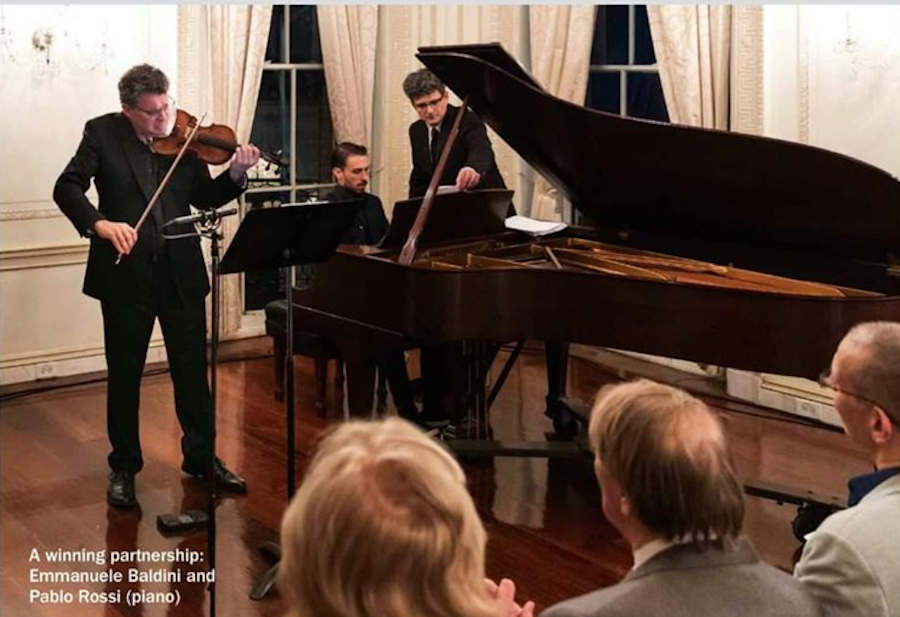
É preciso estar logado para comentar. Clique aqui para fazer seu login gratuito.


![A compositora Valerie Coleman [Divulgação] A compositora Valerie Coleman [Divulgação]](/sites/default/files/styles/menu_preview/public/valerie_coleman.jpg?itok=YBvQxB9L)
![O compositor brasileiro Leonardo Silva [Divulgação] O compositor brasileiro Leonardo Silva [Divulgação]](/sites/default/files/styles/menu_preview/public/w-LeonardoSilvaPorBennoHunziker_0.jpg?itok=jqv1jrSG)
![A pianista Ingrid Uemura durante a prova semifinal na Sala São Paulo [Divulgação] A pianista Ingrid Uemura durante a prova semifinal na Sala São Paulo [Divulgação]](/sites/default/files/styles/menu_preview/public/w-ingrid_uemura.jpeg?itok=sooK9Vtk)
![Vista aérea de Porto Alegre [Reprodução/YouTube] Vista aérea de Porto Alegre [Reprodução/YouTube]](/sites/default/files/styles/menu_preview/public/w-poa2.jpg?itok=0MgG4VEp)
![Apresentação da série Toriba Musical [Divulgação] Apresentação da série Toriba Musical [Divulgação]](/sites/default/files/styles/menu_preview/public/w-julio_medaglia_toriba-musical_0.jpg?itok=6TkV2Zw2)
![O pianista Tom Borrow durante concerto com a Osesp [Divulgação] O pianista Tom Borrow durante concerto com a Osesp [Divulgação]](/sites/default/files/styles/menu_preview/public/w-osesp_borrow.jpg?itok=gcFeEBMl)
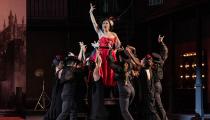
![Vikingur Ólafsson durante ensaio no palco da Sala São Paulo [Divulgação/Osesp] Vikingur Ólafsson durante ensaio no palco da Sala São Paulo [Divulgação/Osesp]](/sites/default/files/styles/menu_preview/public/w-olafsson_0.jpg?itok=SzqV4MXT)
![Kristoff Silva [Reprodução/YouTube] Kristoff Silva [Reprodução/YouTube]](/sites/default/files/styles/menu_preview/public/w-krystoff.jpg?itok=6UMj4RyF)

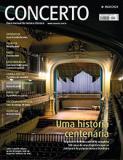

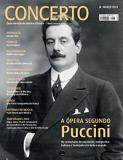
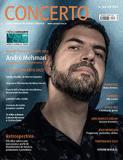
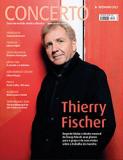
Comentários
Os comentários são de responsabilidade de seus autores e não refletem a opinião da Revista CONCERTO.